Inside look: The Pop-N-Fly with Captain Gary Dubiel.
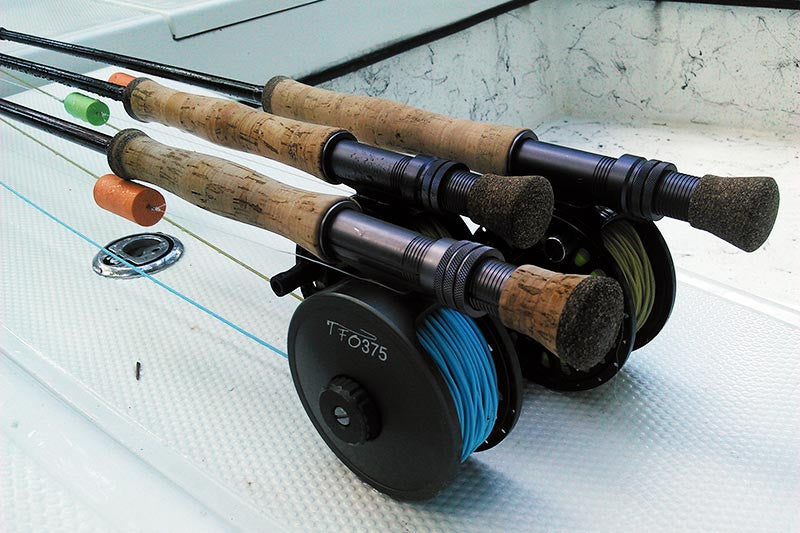
This may seem like an odd way to start off talking about fly fishing, but let’s chat about one of the most popular and easy ways to fish inshore saltwater, the popping cork.
You’re probably thinking, “What does this have to do with anything?!”
Maybe more than you think.
For years, fly anglers have looked to sight-cast to fish in perfect inshore conditions, or blind-cast trying to detect the bait, all while spin fishermen tossed popping cork rigs in many conditions, in many places, and yes, caught many fish.
They proved time and again surface noise caught the attention of many predatory fish such as redfish, speckled trout, weakfish, striped bass, bluefish, and Spanish mackerel.
Although these fish will all take surface lures, there are many times they will not. They are, however, much more likely to take a lure that falls below that noise, and thus the brilliance of the popping cork.
In the past, fly fishermen tried rigging poppers with dropper flies, but casting the two seemed awkward and never seemed to catch on. In fact, even tying a dropper fly to the back end of the popper is difficult.
The solution came to me one day when I was adapting popping cork fishing for giant redfish to the fly rod. The result of securing a Flymen Articulated Shank in a foam cylinder was instant. Tested on day one and my client caught forty-pound redfish on it the next.
The Fish-Skull® Pop-N-Fly™ was born.
Lighter in weight and more aerodynamic than a popper, it created the noise needed to pull giant red drum from the depths of dark tannic water on my native Neuse River. The Pop-N-Fly continued to work and work well, changing a whole fishery.
Soon it was plain to see, if this fly rod version of the popping cork worked well for one fishery, then it should work just as well as in all the other places spin fishermen used their rigs, and it did.
Spotted seatrout fishing is hugely popular in North Carolina and Virginia, and these are destinations popping corks have been popular for many years. It didn’t take long to confirm the Pop-N-Fly was also a great producer of specks.
Cory Routh of Ruthless Outdoor Adventures in Virginia gave the Pop-N-Fly two thumbs up and stated it has altered the ability of his clients to catch more specks.
Likewise, fly angler Brandon Price of New Bern, NC emailed me, elated with his 100 seatrout day this past fall. All the fish came on the Pop-N-Fly.
Specks can often be caught over grass beds, oyster bars, tide rips, and marsh banks and points, all ideal locations to use the fish-calling noise of the Pop-N-Fly.
Choose the small Pop-N-Fly for specks. Rig it with 20 to 24 inches of leader material and a weighted fly. In fact, Flymen’s Fish-Skull® Crafty Deceiver™ (a pattern I may have had a little influence with) is an ideal pattern to fish in this situation. Don’t be surprised if redfish, black drum, stripers, or even flounder bury your Pop-N-Fly.
Speaking of stripers, there are few fish more renowned for their viscous strike on a popper, but there are times and conditions when they will roll at or even slap on the top-water fly. Be quick to switch to the Pop-N-Fly in the large size with about 20 inches of leader material and your favorite sub-surface striped bass fly.
Make some hard strips and pause and hang on as the Pop-N-Fly calls those fish in for the strike. This technique is outstanding on both estuary and landlocked stripers (and hybrids) and has produced fish in Virginia, the Carolinas and Georgia. There is no reason not to give it a go at your local reservoir.
There are few experiences in angling that can match the feel of a giant redfish ripping off fly line and backing from the reel. The Pop-N-Fly was created for this.
Although there are few places with the numbers of true giant redfish as North Carolina's Pamlico Sound, there are “bull” reds throughout the Southeast and, unlike a popular popper video where big reds roll around the bug, the Pop-N-Fly is rarely refused. So whether you're fishing a bait pod on the Neuse River or a slick on the bayou, the Pop-N-Fly will call a giant to your fly in places you never thought it could happen. Choose the Pop-N-Fly in large and fish a large baitfish fly 20 to 22 inches below the rig. My Lil’hadden tied on a 3/0 or 4/0 hook is a perfect match.
A twist from my original ideas came in an email from Paul Wargo of the Northwest Florida Fly Fishers. Popping cork fishing for Spanish mackerel has become very popular in the Gulf. Paul tells me he and other club members have done exceptionally well fly fishing for Spanish with the Pop-N-Fly. In fact, Paul sent a picture over of his largest Spanish mackerel ever taken with the Pop-N-Fly in the fall of 2015. Perhaps Paul or maybe you will be the next to find a new use for the Pop-N-Fly.
There is also a freshwater connection with the Pop-N-Fly. I have heard testimony from anglers from the Midwest, Northeast, and Southeast of using the rig to catch warm water species such as largemouth, smallmouth and spotted bass, crappie, and perch.
My clients and I have done well on large crappie here on the Neuse and Trent Rivers with both crappie and bass. Fly designer and tier Anthony Hipps of North Carolina has caught many species using the Pop-N-Fly around schooling shad.
The Pop-N-Fly fishes best on a floating line designed to throw large flies. The small version casts better on 7 to 9 weight rods while the large is suited for 9 to 12 weights.
Give the Pop-N-Fly a try on your lake, pond, or river. Rig it up with your favorite sinking fly pattern and call a few extra fish your way. As a bonus, it acts as a strike indicator, which can help you put more fish in the boat.
Let us know how your fishing experience goes. Good luck and good fishing!
Want to learn more about how to fish with the Pop-N-Fly? Be sure to read Gary's article:
How to catch redfish on the fly with no visibility: The 3 fundamentals.
Upcoming events/seminars with Gary (click links to buy tickets):
February 5 & 6: The Fly Fishing Show; Winston-Salem, North Carolina.
March 5 & 6: The Fly Fishing Show; Lancaster, Pennsylvania.
April 9 & 10: Virginia Fly Fishing & Wine Festival; Doswell, Virginia.
Want more articles like this?
Subscribe to the Flymen Newsletter at the bottom of the page!
About Captain Gary Dubiel:
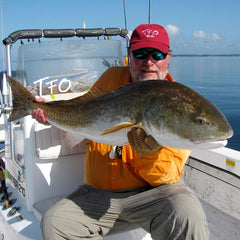 Gary has been guiding for over 15 years. He owns and operates Spec Fever Guide Service on the coast of North Carolina, has written and lectured on both fly fishing and light tackle, and he has appeared on a number of angling shows on ESPN 2, WFN, UNC-TV, NBC Sports, the Sportsman Channel and Discovery Channel (Europe). He's a frequent speaker at local and national fishing shows including the Saltwater Sportsman's National Seminar Series, the Fly Fishing Show, and the Virginia Fly Fishing Festival.
Gary has been guiding for over 15 years. He owns and operates Spec Fever Guide Service on the coast of North Carolina, has written and lectured on both fly fishing and light tackle, and he has appeared on a number of angling shows on ESPN 2, WFN, UNC-TV, NBC Sports, the Sportsman Channel and Discovery Channel (Europe). He's a frequent speaker at local and national fishing shows including the Saltwater Sportsman's National Seminar Series, the Fly Fishing Show, and the Virginia Fly Fishing Festival.


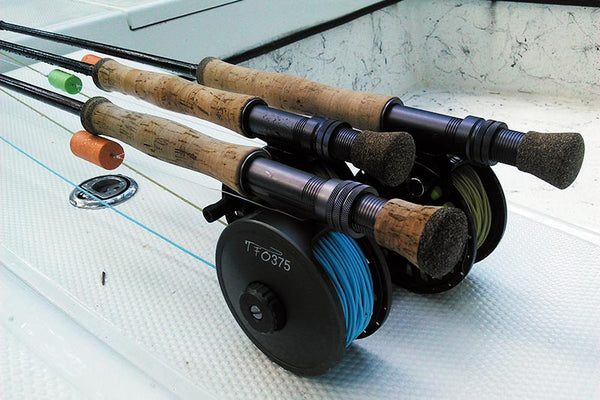

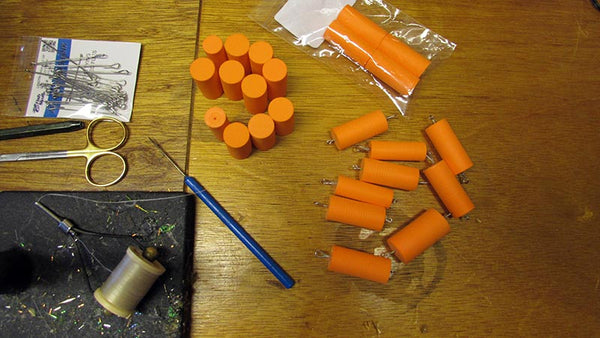


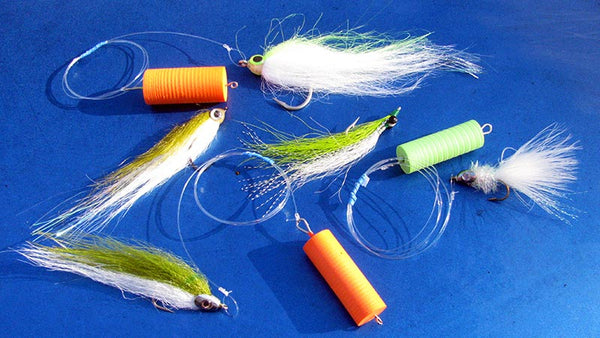

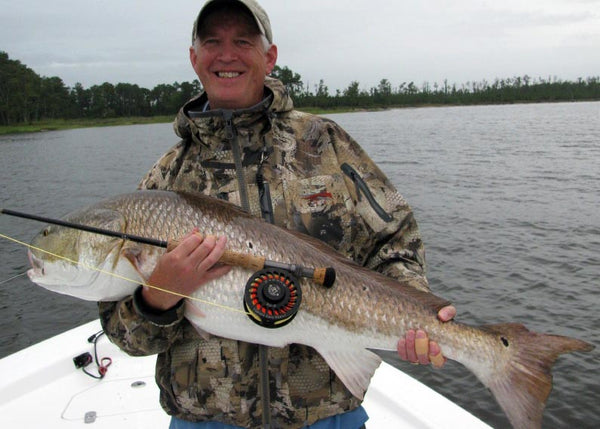


I’ve been making these as well. with beads and rattles.
What size leader and tippet are you typically using with both the small and larger corks?
Thanks.
Very interesting. I live near Mobile, Alabama and as soon as the water cools off, 82 degrees this past weekend, l plan to try your right. Any thoughts on a big popping bug with a dropper?
Leave a comment